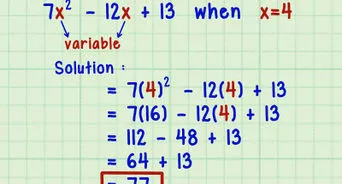Welcome to the fascinating world of Algebra 1, where how to calculate expressions, variables, and operations pave the way for solving complex mathematical problems. As such, this blog embarks on a journey to understand the fundamentals of algebraic expressions, the role of variables, and the significance of various operations. Thus, by the end of this exploration, you’ll have a solid understanding of these concepts and how they apply to real-world scenarios.
Therefore, Learnerscamp has come a long way to help students understand different mathematical concepts including how to calculate expressions, variables, and operations. Not excluding other maths topics such as area, perimeter, coefficients among many other topics. Learnerscamp also enables you to learn maths at the comfort of your space, pace and time.
How to calculate Expressions, Variables, and Operations in Algebra?
Understanding Expressions:
An algebraic expression is a combination of numbers, variables, and arithmetic operations. Hence, it represents a mathematical phrase without an equal sign and can be simplified or evaluated. So, let’s delve deeper into expressions with practical illustrations:
- Example 1: Consider the expression 3x + 5.
- Here, “3x” represents three times the value of the variable x, and “+ 5” indicates the addition of 5.
- If x = 2, then the expression becomes 3(2) + 5 = 6 + 5 = 11.
- Example 2: Explore the expression 2y – 7.
- In this expression, “2y” represents twice the value of the variable y, and “- 7” indicates the subtraction of 7.
- If y = 4, then the expression becomes 2(4) – 7 = 8 – 7 = 1.
Variables in Algebra:
Notably, variables are symbols used to represent unknown or changing quantities in algebraic expressions and equations. Thus, they allow us to generalize mathematical relationships and solve problems efficiently. As such, let’s illustrate the concept of variables with examples:
Example 3: Solve the equation 3x + 2 = 14 for x.
- Here, x represents the unknown quantity.
- To isolate x, we need to perform inverse operations. Subtracting 2 from both sides, we get:
3x = 14 – 2
3x = 12
Dividing both sides by 3, we find:
x = 4
Example 4: Determine the perimeter of a rectangle with length 2x + 3 units and width x – 1 units.
- Here, x represents the variable length and width.
- The perimeter, P, of a rectangle is given by the formula: P = 2(length + width).
- Substituting the given expressions, we get:
P = 2(2x + 3 + x – 1)
P = 2(3x + 2) = 6x + 4 units.
Operations in Algebra:
Moreover, Algebraic operations include addition, subtraction, multiplication, division, and exponentiation. As listed, these operations follow specific rules and properties that facilitate problem-solving. Let’s explore them with practical examples:
Example 5: Simplify the expression 4x + 2y – (3x – y).
- Apply the distributive property to remove the parentheses:
4x + 2y – 3x + y - Combine like terms:
(4x – 3x) + (2y + y) = x + 3y.
Example 6: Factor the expression x^2 – 4. - Recognize it as a difference of squares:
x^2 – 4 = (x + 2) (x – 2).
Conclusion:
In conclusion, Algebra 1 lays the foundation for understanding mathematical relationships and solving equations. Hence, by grasping the concepts of how to calculate expressions, variables, and operations, you gain the tools to tackle a wide range of mathematical problems. Thus, through practical illustrations and examples, you’ve embarked on a journey of algebraic exploration. Embrace the challenges, practice diligently, and let algebra illuminate your path to mathematical proficiency.










One thought on “How to calculate; Expressions, Variables, and Operations in Algebra?”